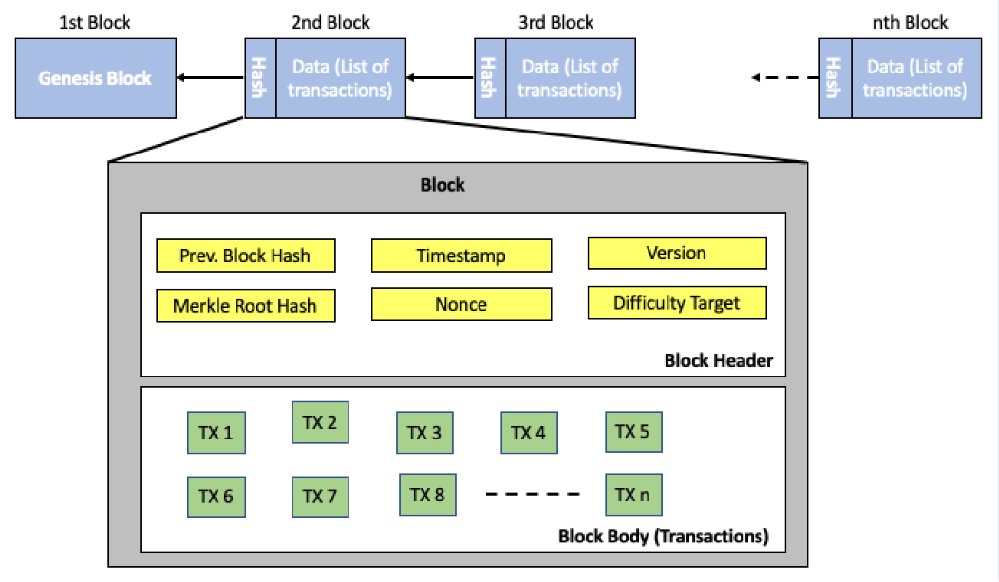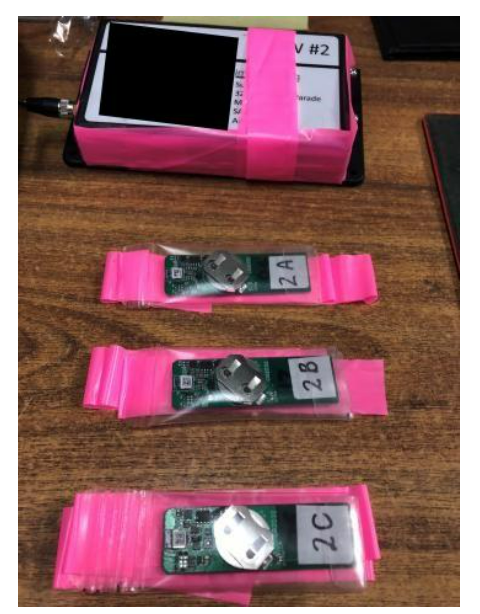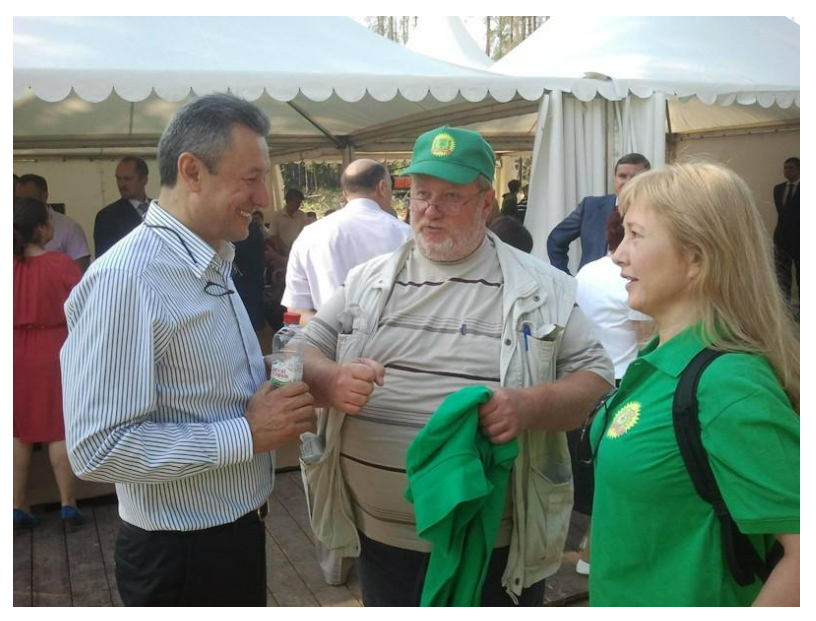Blockchain in the agri-food supply chains – How is Blockchain being used in agriculture?

This post is also available in:
This post is also available in:
![]() हिन्दी (Hindi)
हिन्दी (Hindi)
“The Blockchain will change everything more than the Internet has”, B. Pierce.
A revolution within the agrifood industry and its supply chains.
What is Blockchain Technology?
You’ve likely heard a lot about BlockChain Technology (BCT) with the growing popularity of Bitcoin and other cryptocurrencies. Still, it may be surprising to find it in the agricultural sphere. Traditionally, we have used ICT (Information and Communication Technology) for databases to track data and maintain the flow of information. BCT is a new way to power these databases. They give rights to all network participants instead of a single server and administrator. Multiple parties can then access and verify new additions to the database, allowing for more security and less chance of corruption. It is also more secure than traditional technologies because all parties must reach a consensus to place security blocks on top of encryption. It becomes challenging to tamper with any system (1). A blockchain is a digital transaction ledger maintained by a network of multiple computing machines that are not relying on a trusted third party. Individual transaction data files (blocks) are managed through specific software platforms that allow the data to be transmitted, processed, stored, and represented in human-readable form. In its original bitcoin configuration, each block contains a header with a time stamp, transaction data, and a link to the previous block. A hash gets generated for every block based on its contents and then becomes referred to in the heading of the subsequent block (Picture 1). Hence, any manipulation of a given block would result in a mismatch in the hashes of all successive blocks. Every transaction takes place through the network of machines running the blockchain protocol. It needs to be validated by all compute nodes. The key feature of a blockchain is its ability to keep a consistent view and agreement among the participants (i.e., consensus) (2), even if some of them might not be honest (3). Experts now recognize BTC as one of the most promising technologies (4) and disruptive innovations of the Fourth Industrial Revolution (5). According to one report, experts expect the blockchain supply chain industry to grow at a compound annual growth rate (CAGR) of 81.7% by 2026, faster than almost any other industry on earth (6).

Picture 1. Example of a blockchain containing n blocks. Each successive block includes the previous block’s hash, a timestamp, the transaction information, the nonce number for the mining process, and other details needed for the protocol to work (7).
BTC in the Agrifood supply chain
A massive transformation is taking place in the global fresh fruit supply chain. Consumer demands for food safety and transparency are significant drivers, along with stringent regulations. On top of that, the agriculture supply chain involves many intermediaries, such as farmers, distributors, retailers, and final sellers. Those parties use private databases and documents to store critical information about the origin and safety of products, to which only regulators have access, making them vulnerable to a breach or the loss of data (9,10). Therefore, trust between them is essential in reducing the risk to supply chain safety (11). According to product safety regulations, everyone must follow specific standards, such as the GATT and WTO (12,13). However, there needs to be a standard global agricultural protocol shared among agriculture participants, which leads to misunderstandings and increases the risks to consumer safety. Even a small food supply or preparation mistake can be costly for finances and health. In recent times, Internet of things – based (IoT) techniques such as barcoding, Q.R. code, and RFID have enabled the traceability of products. However, these techniques are centralized in nature and prone to a single point of failure. Research indicates that technologies working on a centralized structure can easily be manipulated, hacked, or corrupted because of dependence on a single authority. BCT works on a decentralized platform, thus helping to overcome the shortcomings of the technologies built on a centralized network (14). It is a distributed ledger system (a record-keeping system associated with cryptocurrency) based on consensus among peers on the network. The foundation of BCT is trust; it reduces reliance on third-party members in the supply chain. In addition to these features, BCT allows irreversibly storing the data, creating a unique level of credibility, which contributes to efficient agrifood supply chain management (AFSM) (15).
Benefits and challenges of BTC in Agrifood supply chain management (AFSM)
The most frequently occurring benefit is traceability. BCT provides a permanent database for recording each transaction, a means for monitoring real-time data at different supply chain stages. Moreover, BCT-enabled traceability enables participants to draw the product’s life cycle from origin to end. The benefit of transparency also occurs frequently in the literature search. Traceability and transparency have benefitted the agrifood supply chains in several ways. In addition, integrating BCT with IoT is known to provide technical advantages to agrifood firms. It has resulted in robust, resilient, and automated systems. The other benefit of BTC is eliminating the need for intermediaries. Research suggests that removing the intermediaries from the supply chain has reduced transaction costs and improved overall profits. Overall, BCT helps achieve the overall goal of food safety to minimize health risks and increase consumer trust. Table 1. provides a consolidated list of benefits and the resulting outcomes.
Table 1. The benefits and resulting outcomes of BCT in the agrifood sector
| Traceability | Minimizing food frauds (16) Irreversible storage of data (17) Effective monitoring of supply chains (18) |
| Transparency | Smooth transactions & information exchange (19, 20) |
| Integration of BCT with IoT | Resilient, automated systems (21, 22) |
| Elimination of intermediaries | Reduction in transaction costs, increasing profits, streamlining business processes (23, 24) |
| Food Safety | Minimizing health risks, promoting consumer health, better economic returns (25,26) |
Nobody can undermine the benefits of BCT. The implementation of BCT has been considered revolutionary for the agrifood sector. However, specific challenges need to be identified for broader technology implementation and the agrifood industry’s benefit. The main challenges identified are privacy, security, scalability, lack of regulations, and lack of skills and training (27).
Blockchain applications in food supply chain management
In light of the benefit of BTC in AFSM, several companies, start-ups, and initiatives are using BTC to improve supply chain management and implement traceability solutions. The application of BTC in the supply chain of infant formula that provides transparency from farm-to-fork, as well as after-sales support and services and points to an anti-counterfeit resolution, is a characteristic example (28). Consumer concerns about milk products may stem from the 2008 Chinese milk scandal, which sparked a global food safety debate. Milk and infant formula from the country were mixed with other food materials and melamine, a chemical compound used to produce laminates and glues. The incident led to six deaths, and at least 11 countries stopped all imports of Chinese dairy products. One more successful example of integrating the technology of BTC in the AFSM is the mango chains in America to trace sliced mangoes from South and Central America to North America (29). Mangoes, mango origins, and derivatives are shipped worldwide, and they are susceptible to Listeria and Salmonella contaminations (30). The same technology has been applied to track Haitian mangoes and avocados, enabling Haitian farmers to access export markets and improve income. A BTC solution for traceability and payments for the mangoes and avocados was developed, allowing direct payments to farmers (31).
Furthermore, in 2018 a leading Australian mango producer kicked off a supply chain management program across their supply chain and distribution centers. The project employs sensors placed in mango and tracks the movement of the sweet fruit in addition to monitoring its temperature, humidity, and transit time (8) (Picture 2). The company can see where its fruit is across the supply chain in real time. This way, it can support proactive quality control and quality assurance protocol to face any issues right away and complement what is already a best-in-industry approach. “The impact of this project will be broader than mango industry only. It will extend to other agricultural products and supply chain systems, which may result from the efficiencies this blockchain platform has demonstrated,” said its CEO. BTC has been implemented to such a great extent in the supply chain of mangoes because they are consumed worldwide as seasonal fruits with a high nutrient content. On top of that, attractive prices have increased consumption, and most fruits are imported from developing countries (8). Other commercial applications include beef, palm oil, seafood, and turkey (27).

Picture 2. Internet of Things (IoT) sensors are placed in mango crates in packing sheds and travel with the fruit to the retailer – transmitting real-time data to the blockchain platform along the way. These sensors monitor things like temperature, humidity, and time in transit. Source: https://www.crcna.com.au/news/blockchain-technology-delivers-sweet-success-northern-australian-mango-producer
Kolionovo Ecosystem (32)
In August 2016, the village of Kolionovo near Moscow, Russia, became the first in the world to integrate blockchain technology into its farming business and agriculture management (33, 34). Kolionovo uses a decentralized blockchain system for some local organizational, financial and legal issues. Moreover, people in this village launched their local cryptocurrency tokens called “Kolions” to manage their economy and business by themselves (32) (Picture 3). The rural village on the outskirts of Moscow has become a role model of circular economy, thanks to the launch of the first agricultural ICO (Initial Coin Offering, a fundraising system similar to public offerings but based on cryptocurrencies) on the Russian market (34). The head of the farm, Mikhail Shlyapnikov, shared the impacts so far – including these reported benefits (33).
- A new form of cooperation between consumers and producers
- Nearly all openly recorded shares reserved or paid for
- Plans underway for the long-term implementation of direct supply, without intermediaries.

Picture 3. Kolionovo Ecosystem. Source: https://libre.life/organization/kolionovo/en
The range of available products has expanded through collaboration with neighboring farms, adding fresh goats’ milk and cheese, mutton, rabbit, and products of fowl, fish, and honey. The farm is investing in expansion, improvements to increase quality and production rate, risk mitigation, and more functions for the local cryptocurrency, Kolions, and a greater range of transaction services through a known blockchain platform (34). Separately, Shlyapnikov reported halving the price of some products thanks to cutting out intermediaries. Unfortunately, although the project was successful and beneficial for the village, Shlyapnikov was later arrested, and the “kolion” was declared illegal tender. The farmer then transferred his business to Belarus, where the ICO procedure was legalized in December 2017, and he started growing potatoes there (35).
Blockchain is a promising technology for a transparent food supply chain. Still, many barriers and challenges remain, limiting its wider adoption among farmers and food supply systems. The near future will reveal whether and how governmental and private efforts can address these challenges to establish blockchain technology as a secure, reliable, and transparent way to ensure food safety and integrity. It will be fascinating to see how blockchain will be combined with other emerging technologies (big data, robotics, IoT, RFID e.t.c.) to achieve greater automation of food supply processes and maintain complete transparency and traceability simultaneously.
References:
- https://www.edengreen.com/blog-collection/blockchain-technology-in-agriculture
- Bano, Shehar. 2017. Consensus in the Age of Blockchains. arXiv preprint arXiv:1711.03936.
- Castro, Miguel, and Barbara Liskov. 1999. “Practical Byzantine Fault Tolerance.” OSDI 99: 173-186.
- Fernandez-Carames, T., Fraga-Lamas, P., (2019), A review on the application of blockchain to the next generation of cybersecure Industry 4.0 smart factories. IEEE Access 7, 45201–45218. https://doi.org/10.1109/ACCESS.2019.2908780.
- Si, S., Chen, H., (2020), A literature review of disruptive innovation what it is, how it works and where it goes. J. Eng. Technol. Manag. 56, 101568.
- https://www.researchandmarkets.com/reports/5239614/blockchain-supply-chain-market-growth-trends
- Kamilaris, A., Fonts, A. and Prenafeta-Boldύ X., F., .(2019), The Rise of Blockchain Technology in Agriculture and Food Supply Chains. Trends in Food Science & Technology. Vol. 91, pp. 640-652.
- https://tracextech.com/blockchain-in-fruit-supply-chain/
- Beulens, A.J.; Broens, D.F.; Folstar, P.; Hofstede, G.J. Food safety and transparency in food chains and networks Relationships and challenges. Food Control 2005, 16, 481–486.
- Aung, M.M.; Chang, Y.S. Traceability in a food supply chain: Safety and quality perspectives. Food Control 2014, 39, 172–184.
- Mayer, R.C.; Davis, J.H.; Schoorman, F.D. An integrative model of organizational trust. Acad. Manag. Rev. 1995, 20, 709–734
- Hudec, R.E. GATT/WTO Constraints on National Regulation: Requiem for an “Aim and Effects” Test. Int. Lawyer 1998, 32, 619–649
- Mavroidis, P.C. The Regulation of International Trade: GATT; MIT Press: Cambridge, MA, USA, 2015; Volume 1. 5. Beulens, A.J.; Broens, D.F.; Folstar, P.; Hofstede, G.J. Food safety and transparency in food chains and networks Relationships and challenges. Food Control 2005, 16, 481–486
- Ehrenberg, A.J. and King, J.L. (2020), “Blockchain in context”, Information Systems Frontiers, Vol. 22 No. 1, pp. 29-35.
- Yadav, S. and Singh, S.P. (2020a), “An integrated fuzzy-ANP and fuzzy-ISM approach using blockchain for sustainable supply chain”, Journal of Enterprise Information Management, Vol.34, No. 1, pp. 54-78.
- Kayikci, Y., Subramanian, N., Dora, M. and Bhatia, M.S. (2020), “Food supply chain in the era of Industry 4.0: blockchain technology implementation opportunities and impediments from the perspective of people, process, performance, and technology”, Production Planning and Control, pp.1-21
- Saberi, S., Kouhizadeh, M., Sarkis, J. and Shen, L. (2019), “Blockchain technology and its relationships to sustainable supply chain management”, International Journal of Production Research, Vol. 57 No. 7, pp. 2117-2135.
- Yadav, S. and Singh, S.P. (2020b), “Blockchain critical success factors for sustainable supply chain”, Resources, Conservation and Recycling, Vol.152, 104505.
- Kamble, S., Gunasekaran, A. and Arha, H. (2019), “Understanding the blockchain technology adoption in supply chains – Indian Context, International Journal of Production Research, Vol. 57 No. 7, pp. 2009-2033.
- Papadopoulos, T., Singh, S.P., Spanaki, K., Gunasekaran, A. and Dubey, R. (2021), “Towards the next generation of manufacturing: implications of big data and digitalization in the context of industry 4.0”, Production Planning and Control.
- Atlam, H.F., Alenezi, A., Alassafi, M.O. and Wills, G.B. (2018), “Blockchain with internet of things: benefits, challenges, and future directions”, International Journal of Intelligent Systems and Applications, Vol.10 No. 6, pp. 40-48.
- Reyna, A., Martin, C., Chen, J., Soler, E. and Díaz, M., (2018), “On blockchain and its integration with IoT. Challenges and Opportunities”, Future Generation Computer Systems, Vo. 88, pp. 173-190.
- Bumblauskas, D., Mann, A., Dugan, B. and Rittmer, J. (2020), “A blockchain use case in food distrubition: do you know where your food has been?”, International Journal of Information Management, Vol. 52, p. 102008.
- Chen, S., Liu, X., Yan, J., Hu, J. and Shi, Y. (2021), “Processes, benefits, and challenges for adoption of blockchain technologies in food supply chains: a thematic analysis”, Information Systems and E-Business Management, Vol 10 No. 3, pp. 909-935.
- Casino, F., Kanakaris, V., Dasaklis, T.K., Moschuris, S. and Rachaniotis, N.P. (2019), “Modeling food supply chain traceability based on blockchain technology”, IFAC-PapersOnLine, Vol. 52 No.13, pp. 2728-2733.
- Galvez., J.F., Mejuto, J.C. and Simal-Gandara, J. (2018), “Future challenges on the use of blockchain for food traceability analysis”, TrAC- Trends in Analytical Chemistry, Vol. 107, pp. 222-232.
- Svrivastava, A. and Dashora, K., (2022), Application of blockchain technology for agrifood supply chain management: A systematic literature review on benefits and challenges., Benchmarking: An International Journal, Vol. 29, No. 10, pp. 3426-3442.
- https://www.ledgerinsights.com/danone-blockchain-food-traceability-baby-formula/
- Burkitt, L., “Walmart to triple spending on food safety in China,” Wall Street Journal, June 17, 2014. www.wsj.com/articles/Walmart-to-triple-spending-on-food-safety-in-china-1402991720
- Yiannas, F., Walmart’s vice president of food safety, interviewed by R. Kamath, June 28, 2017.
- https://www.worldbank.org/en/
- https://www.researchgate.net/
- https://www.thefuturescentre.org/signal/russian-farm-first-to-track-its-activities-on-blockchain/
- https://coinidol.com/world-first-village-to-adopt-blockchain-in-farming-management/
- https://www.haaretz.com/world-news/








































































